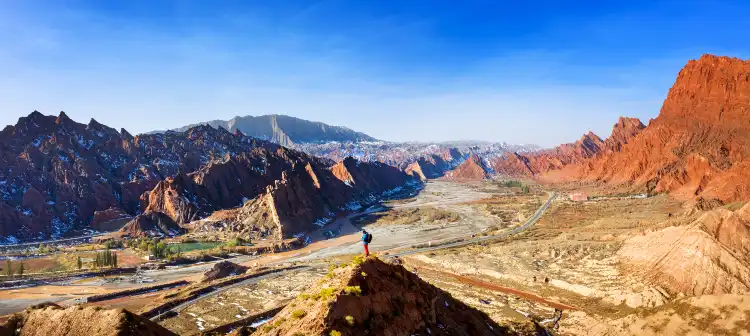
Find the Cheap Kuqa Hotels
Enter your dates for the latest hotel rates and availability.
Swipe up to view more
Filter by:
Hotel Star Rating
≤2345
Popular Filters
Amazing 4.5+Great 4.0+Good 3.5+Pleasant 3.0+We found 214 hotels for you in Kuqa
Choose your travel dates to see the latest prices and deals.
Most Booked
Lowest Price
Closest to Downtown
Highest Rated



Hotel near Kuqa
GGuest User 2023.07.07
The hotel is very large and divided into several floors. Catch up with the team when you check in, there are a lot of people. The front desk made a wrong room card, and I couldn't get in the room by swiping it. I entered the room and wiped the sink with a towel, it was black. There are melon seeds on the ground. There are a lot of people for breakfast, there is nothing to eat, and the food will be collected on time at 10:30. 🙃
Outstanding
326 reviews
4.6/5
Price from
CAD 57
per night

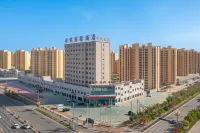
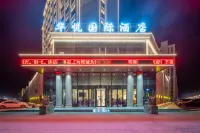
Hotel near Kuqa
GGuest User 2024.06.09
The lobby is bright and spacious, with a relatively large area. The service attitude of the lady at the front desk is very good. The hotel facilities are very new and the sanitary conditions are good. The smart butler in the room is very convenient. There is also a full-length mirror. I like it very much. The bathroom has disposable toilet mats and bed sheets and quilt covers. Very clean and looks very reassuring. The location of the hotel is very good. Nanhu Night Market is right outside the door, so you can go out and hang out in the evening.
Outstanding
720 reviews
4.6/5
Price from
CAD 46
per night



Hotel near Kuqa
Yyunzi1212 2024.09.30
Hotel with good value for money and service. We took the train from Kashgar for a night, about seven o'clock, the hotel has a pick-up station service, very convenient, and also checked in for us early in the morning, very user-friendly. Seeing that we had a lot of luggage, we also gave us a twin room with a larger space.
The hotel's open laundry room is also very user-friendly, washed and can be directly tied there.
Breakfast was good, the waiter in the breakfast room, a little girl who always smiled, the service was very good.
More worth mentioning, because we encountered a more urgent special situation, need to use a computer, but also specially helped us open the general manager, let us use the computer.
Although I stayed at the Aimei Hotel for one night, it was the warmest hotel in our entire Xinjiang trip.
Outstanding
308 reviews
4.8/5
Price from
CAD 34
per night

You Might Like
Hotels With BreakfastHotels With Twin RoomHotels With 1 Double BedHotels With Swimming PoolHotels With Free Cancellation
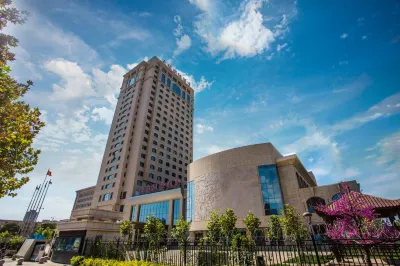


Hotel near Kuqa
AAnonymous User 2024.05.30
The hotel environment is good. I read in the comments section that the service at the front desk was not attentive, but when I arrived, the girl at the front desk was attentive and enthusiastic. When I made the reservation, it was mentioned that it was a non-smoking room. After I came to confirm again, the girl at the front desk told me some basic precautions. matter. The room is very spacious and non-smoking. It is clean and comfortable. It is very convenient to take a taxi. There is also a charging station in the yard and a free car wash. This is very nice, not bad😊😊. I will come again next time!
Outstanding
544 reviews
4.6/5
Price from
CAD 37
per night
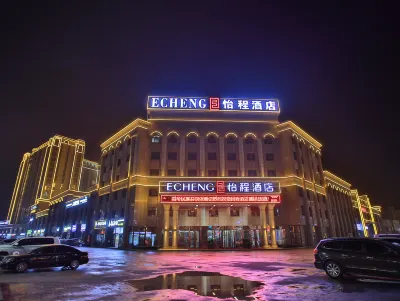

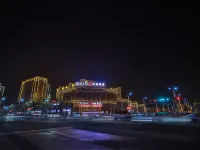
Hotel near Kuqa
KKellyLing 凌淑飛 2023.10.15
Excellent hotel, great professional staff, and very good location. Location is very central and restaurants everywhere downstairs. The hotel room is clean and very well appointed. Service is good, especially the front desk guy. He was very helpful and gave accurate advise. Free laundry service is a bonus and much appreciated. Breakfast is the usual fair, and can get crowded during peak hour. This hotel caters for tour buses so can get a bit busy and noisy in the evenings but rooms are really quite. One of the best hotels we have stayed in our trip and highly recommended. I hope they have more hotels everywhere in China.
Outstanding
1404 reviews
4.8/5
Price from
CAD 34
per night


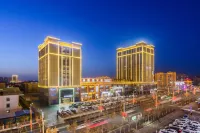
Hotel near Kuqa
GGuest User 2024.02.28
The location is excellent and the transportation is convenient. It is easy to travel. There is a parking space at the door, which is very convenient. The lobby is simple and elegant, with a reasonable layout. There is light music, which is very nice. The tea is very good. The front desk is efficient, thoughtful, and professional. The room type is upgraded for free. The room has good lighting, bright, quiet, and clean. The mattress is very comfortable. The shower has fast water flow, good water temperature, fast Internet speed, and the room is tidy. The breakfast is also very good and delicious [Hey Ha] Highly recommended [strong] [strong] [strong]
Excellent
372 reviews
4.5/5
Price from
CAD 42
per night

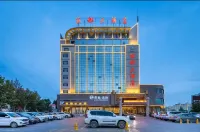

Hotel near Kuqa
YYiketelidulidedadage 2023.10.04
A must-visit hotel if you are driving with a baby! The beds are very comfortable. The two 1.5-meter beds are equivalent to three meters wide when I take my children with me. This is great. No more crowding. The room is large, the table is long, and there are many charging ports. The bedding looks new. The breakfast is delicious, with pasta, about ten dishes, and fruit yogurt bread. The lady at the front desk is very polite, professional and conscientious, and reminds us of various benefits. The security guard is also enthusiastic. The parking lot behind the hotel is very big. Mark it and I will stay in this hotel when I drive in Xinjiang in the future!
Outstanding
1364 reviews
4.8/5
Price from
CAD 53
per night
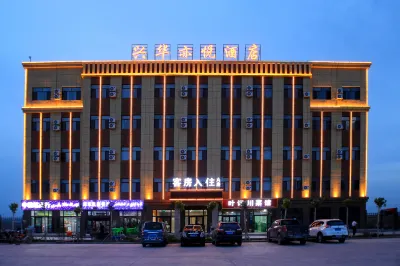
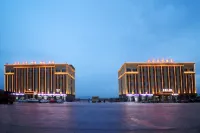

Hotel near Kuqa
GGuest User 2024.07.18
庫車郊區,茫茫戈壁灘中。價格真便宜,酒店也還不錯。不含早但是外面好多早餐店,做的很好吃而且價格很便宜。過來路上還遇到了沙塵暴,第一次,作為外地人,覺得挺有意思的。
Outstanding
419 reviews
4.6/5
Price from
CAD 29
per night
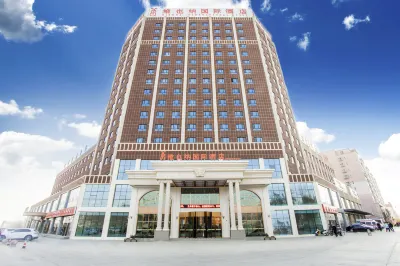
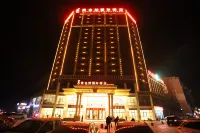

Hotel near Kuqa
AAnonymous User 2023.09.29
The nearby Bing Jia has delicious pepper chicken. The hotel is average, but the price keeps changing, which gives people a bad feeling. I booked a room a week in advance, but the price dropped three times during the period. I booked in advance because it was almost a holiday, but I didn't expect that the price would keep dropping later. It felt quite confusing.
Outstanding
1421 reviews
4.7/5
Price from
CAD 32
per night



Hotel near Kuqa
AAnonymous User 2023.12.22
This is the most thoughtful hotel I have ever stayed in. When I entered the door, the waiter gave tea and coffee. I didn’t expect to have a free dinner. The most pleasant surprise was that I had breakfast this morning and dumplings. I originally thought I had to go to buy dumplings today. It can be said that the service is intimate and thoughtful. Worth five-star praise 👍🏻👍🏻👍🏻
Outstanding
656 reviews
4.7/5
Price from
CAD 30
per night
Top hotel picks in Kuqa
See all
Check out these top-booked hotels from the past 30 days!
No.1
4.3/5
230 reviewHUAKE YOUTH HOSTEL
Hotel near Kuqa
"Great value for money""Easy to get around"
Select dates to view pricesNo.2
4.8/5
1357 reviewHome2 Suites By Hilton XinJiang Kuche
Hotel near Kuqa
"Great amenities""Delicious breakfast"
Select dates to view pricesNo.3
4.8/5
745 reviewStarway Hotel (Kuqa Tianshan Middle Road)
Hotel near Kuqa
"Delicious breakfast""Friendly front desk staff"
Select dates to view pricesNo.4
4.7/5
1429 reviewKuqa Chaoshi Wanhua International Hotel
Hotel near Kuqa
"Classy environment""Delicious breakfast"
Select dates to view pricesNo.5
4.8/5
440 reviewHome Inn (Kuche Changning Road)
Hotel near Kuqa
"Delicious breakfast""Great amenities"
Select dates to view pricesNo.6
4.7/5
51 review傾城民宿青旅
Hotel near Kuqa
"Clean and tidy""Great stay!"
Select dates to view pricesNo.7
4.7/5
818 reviewMarriott Holiday Hotel (Kuche Railway Station)
Hotel near Kuqa
"Delicious breakfast""Great amenities"
Select dates to view pricesNo.8
4.7/5
670 reviewKuqa Lanhai Smart Hotel (Municipal Government Branch)
Hotel near Kuqa
"Great amenities""Delicious breakfast"
Select dates to view pricesNo.9
4.8/5
955 reviewAtour X Hotel Kuqaguizi Ancient City
Hotel near Kuqa
"Great rooms""Great amenities"
Select dates to view pricesNo.10
4.7/5
1139 reviewAll season hotel (Kuqa Tianshan Middle Road store)
Hotel near Kuqa
"Friendly front desk staff""Delicious breakfast"
Select dates to view pricesHotels with tasty breakfast in Kuqa
See all
Start your day with a tasty breakfast at one of our favourite hotels in Kuqa.
Ku Che Hotel
Hotel near Kuqa
The Ku Che Hotel is an ideal spot for travelers wanting to discover the city. Visitors to Kuqa will find that the Ku Che Hotel is a fantastic accommodation choice. With Kuqa Railway Station just 3km away and Kuqa Qiuci Airport only 14km away, transportation is very convenient. With multiple attractions nearby including Kuqa Pedestrian Street, Kuqa Datongcheng and Qiuci Cultural Square, guests will find plenty to keep themselves occupied. This hotel makes a great place to kick back and relax after a long day of sightseeing. This Kuqa hotel features parking on site. Germaphobes can rest easy - the level of cleanliness is highly rated at this hotel. This hotel is a popular accommodation for guests traveling for business.
4.6/5
Outstanding1440 reviewPrice per night from: CAD 47
Yishang Hotel (Kuqa Jiankang Road Branch)
Hotel near Kuqa
Opened in 2022, the Yishang Hotel (Kuqa Jiankang Road Branch) offers travelers a pleasant stay in Kuqa, whether for business or leisure purposes. The hotel is only 5km from Kuqa Railway Station and 13km from Kuqa Qiuci Airport, giving guests a number of convenient transportation options. There is no shortage of things to see in the area, with the Qiuci Cultural Square, Kuqa Datongcheng and Kuqa Pedestrian Street all nearby. This hotel makes a great place to kick back and relax after a long day of sightseeing. This Kuqa hotel provides parking on site. If cleanliness is important to you, this hotel makes an excellent choice, as our guests consider this to be one of the cleanest hotels in the city. This hotel is the usual choice for a large number of business travelers.
4.7/5
Outstanding979 reviewPrice per night from: CAD 21
All Seasons Hotel (Kuqa East Lake Store)
Hotel near Kuqa
This hotel is really beyond my imagination, the service is warm and thoughtful, the environment is elegant and comfortable, and every detail reveals high quality. The service staff specially arranged to the room by the lake. As a result, the night view of the East Lake was super beautiful. It made people feel very comfortable. The bed was soft and made me sleep well. The breakfast was rich and delicious. I looked at it with appetite and made me full of energy. Start a new day. The accommodation experience is excellent, the facilities are complete, the transportation is convenient, the surrounding food is rich, and I will choose here next time.
4.8/5
Outstanding448 reviewPrice per night from: CAD 32
Lavande Hotel Kuche Western Region Ledu
Hotel near Kuqa
The Lavande Hotel Kuche Western Region Ledu is an ideal spot for travelers wanting to discover the city. The Lavande Hotel Kuche Western Region Ledu is an ideal choice for travelers who want to take in the sights and sounds of Kuqa. The hotel is conveniently located just 7km from Kuqa Railway Station and 13km from Kuqa Qiuci Airport. With multiple attractions nearby including Kuqa Pedestrian Street, Kuqa Datongcheng and Qiuci Cultural Square, guests will find plenty to keep themselves occupied. At the end of a busy day, travelers can unwind and relax in the hotel or go out and enjoy the city. This Kuqa hotel features parking on site. If you demand a high level of service, our guests have indicated that this hotel has excellent standards. This hotel is a popular accommodation for groups of friends traveling together.
4.4/5
Excellent1000 reviewPrice per night from: CAD 27
Duku Holiday Inn
Hotel near Kuqa
The Duku Holiday Inn is a great choice for guests looking for accommodation in Kuqa, having been recently opened in 2022. Boasting a convenient location, the hotel is just 7km from Kuqa Qiuci Airport and 12km from Kuqa Railway Station. There is no shortage of things to see in the area, with the Kucha Museum, Keheidun Beacon Tower and Kuche Royal Palace all nearby. This hotel makes a great place to kick back and relax after a long day of sightseeing. This Kuqa hotel provides parking on site. Our guests rate this hotel as one of the best hotels for cleanliness. For guests traveling with groups of friends, this hotel is consistently one of the most popular choices.
4.6/5
Outstanding473 reviewPrice per night from: CAD 21
Kuqa Xinyu Hotel (Guiz Plaza)
Hotel near Kuqa
The Kuqa Xinyu Hotel (Guiz Plaza) is a great choice for guests looking for accommodation in Kuqa, having been recently renovated in 2023. With Kuqa Railway Station just 7km away and Kuqa Qiuci Airport only 11km away, transportation is very convenient. The nearby area boasts an abundance of attractions including Qiuci Cultural Square, Kuqa Datongcheng and Tomb of Molana Arshidinhan. When guests have some time on their hands they can make use of the onsite facilities. Guests of this Kuqa hotel can make use of the parking facilities. If you are looking for a convenient place to stay, our guests have told us that this location is excellent. This hotel is a popular accommodation for groups of friends traveling together.
4.5/5
Excellent215 reviewPrice per night from: CAD 19
Lan Du Hotel
Hotel near Kuqa
Opened in 2022, the 兰都酒店(库车天山中路店) is a great accommodation choice in Kuqa. The hotel is conveniently located just 5km from Kuqa Railway Station and 12km from Kuqa Qiuci Airport. Seeing Kuqa's sights from this hotel is easy with Tomb of Molana Arshidinhan, Kuqa Datongcheng and Qiuci Cultural Square all close by. In their spare time, guests can explore the hotel's surroundings. This Kuqa hotel provides parking on site. According to our trusted guests, the facilities at this hotel are first-rate. This hotel is a popular accommodation for groups of friends traveling together.
4.4/5
Excellent391 reviewPrice per night from: CAD 30
Ta Li Mu Hotel
Hotel near Kuqa
The Ta Li Mu Hotel provides a great place for travelers to relax after a busy day. The Ta Li Mu Hotel offers a pleasant stay in Kuqa for those traveling for business or leisure. With Kuqa Railway Station just 3km away and Kuqa Qiuci Airport only 16km away, transportation is very convenient. This hotel is located near many of Kuqa's attractions including Qiuci Ecological Park, Kuqa Pedestrian Street and Kuqa Datongcheng. When guests have some time on their hands they can make use of the onsite facilities. This Kuqa hotel features parking on site. If you demand a high level of service, our guests have indicated that this hotel has excellent standards. Perfect for those working on the move, this hotel caters to a large number of business guests.
4.4/5
Excellent440 reviewPrice per night from: CAD 17
龜茲別苑民宿
Hotel near Kuqa
The room was particularly pleasant, very satisfying! The stay was so comfortable. I forgot to take pictures. I can only say that the pictures on the official website are completely consistent and not false at all. The brands of all items are well selected. There is also a smart speaker TV, and the room is also very large. I traveled to Xinjiang for 14 days and kept the accommodation within 500. This hotel is definitely the best one I have ever stayed at!
It’s nice to go shopping in the nearby Restan Street, but to be honest, the scenery near Kuqa is so boring that I really can’t think of anything to do, so I just kicked the accelerator and spent the last few days in Kashgar. The ancient city of Kashgar is indeed better than the old city of Kuqa. The specifications are too high.
4.7/5
Outstanding227 reviewPrice per night from: CAD 43
Kuche Hotel (Sanxing Building)
Hotel near Kuqa
The Kuche Hotel (Sanxing Building) provides a great place for travelers to relax after a busy day. Visitors to Kuqa will find that the Kuche Hotel (Sanxing Building) is a fantastic accommodation choice. With Kuqa Railway Station just 3km away and Kuqa Qiuci Airport only 14km away, transportation is very convenient. There is no shortage of things to see in the area, with the Qiuci Ecological Park, Old City of Kuche and Kuqa Pedestrian Street all nearby. After a long day of sightseeing, guests can retire to the comfort of the hotel. Guests of this Kuqa hotel can make use of the parking facilities. If you demand a high level of service, our guests have indicated that this hotel has excellent standards. Perfect for those working on the move, this hotel caters to a large number of business guests.
4.6/5
Outstanding2221 reviewPrice per night from: CAD 31
Latest Reviews for Kuqa hotels
See all
Explore genuine reviews and ratings from real travellers to find the perfect accommodation for your needs.
4.8/5
Outstanding
GGuest UserDuring my eleven days in Xinjiang, Xizhou Hotel has undoubtedly become the most satisfying one of my stay experiences. From the moment I stepped into the hotel lobby, I was deeply attracted by the design of the hotel, and the next series of experiences made me praise this hotel.
First of all, the design of Xizhou Hotel is really ingenious. Whether it is public areas or guest rooms, it reveals an elegant and warm atmosphere. The designer cleverly uses color and material to make the whole space modern and traditional. It is especially worth mentioning that the layout of the guest room is reasonable, and every detail is considered very thoughtful, making people feel the comfort and warmth of home.
In terms of front desk service, Xizhou Hotel is impeccable. The front desk staff is warm and thoughtful, smiling, and efficient and attentive when checking in. They not only patiently answered my various questions, but also offered me recommendations for surrounding travel and dining, making me feel at home.
Adequate parking is undoubtedly an important consideration for self-driving travelers. Xizhou Hotel has done a great job in this regard, with spacious parking spaces on site, which makes it easy to park whether it is a large SUV or a small car. This saved me a lot of trouble finding parking spaces during my trip.
In addition, the laundry facilities of Xizhou Hotel are also very convenient. Washing machines, dryers and other equipment are readily available and easy to operate, so that I can easily keep my clothes clean and tidy during the trip. This is undoubtedly a great convenience for long-distance travelers.
Finally, I would like to mention the hot water supply of Xizhou Hotel. The hot water in the bath is sufficient and stable, so that I can enjoy a comfortable bathing experience at all times.
In summary, Xizhou Hotel provided me with a perfect stay with its exquisite design, warm and thoughtful service, ample parking spaces, convenient laundry and ample hot water supply. I believe that Xizhou Hotel will be your best choice whether it is business or leisure travel.
4.7/5
Outstanding
GGuest User库车龟兹小巷蘭舍民宿
服务:服务到位满意
卫生:卫生干净
环境:环境优雅
适合我们出行的人居住,真诚推荐游客朋友到蘭舍民宿。
4.7/5
Outstanding
YYigeputongrenerThe room facilities are comfortable and there is watermelon to eat at night hahahahahaha. There is a large parking lot at the door and car maintenance. Car washing is convenient and cost-effective. You can go anywhere by electric car. There is a Edeborg Fatty Beef nearby. You must go to eat there. The environment is good, the service is good, the quantity is super large and affordable. Give a table of snacks, fruits and drinks
4.6/5
Outstanding
SShengjiminiyanuoyiyinThe location is excellent, very close to the train station and bus station. Bus No. 10 and No. 6 are right in front of the hotel. I deliberately asked for a room far away from Huanghe Road, but ignored that there is a railway behind it. The noise is acceptable if the windows are closed. There is a restaurant next to it that offers all kinds of Xinjiang specialties.
4.6/5
Outstanding
YYundanfengqingjingSorry, I'm too busy to comment. I've been thinking about giving you a good review. I traveled to Xinjiang more than ten days ago and stayed one night in Kuqa and chose this B&B. As soon as we entered the courtyard, the young lady was very enthusiastic. She cut a watermelon for us and introduced us a lot about Kuqa. She also recommended a nearby restaurant for dining. The roasted whole lamb was indeed delicious and cost-effective. I was very satisfied. After eating, you can take a walk along the river and go to the night market on Restan Street. You can also see the Kuche folk song final that day. The B&B was renovated from an old Uyghur dwelling, so it has its own style, and the small courtyard is fragrant with melons and fruits. Although it has been renovated, public facilities such as pipes are still a bit old, so when using the toilet, you need to be careful not to throw paper directly into it.
4.6/5
Outstanding
GGuest UserI really like the front desk lady at Room 103. Her service attitude is very good. This is my second time staying here. First, the young and tall ethnic minority lady at the front desk opened Room 1611 for me. The door of the room is facing the elevator entrance without any obstruction. It is also half the size of the room I stayed in last time. I felt very depressed because the room was facing the elevator entrance and small. I suffered from insomnia directly! Then I contacted the lady at Room 103 who opened the room and invoiced me the first time I stayed there the next day. She quickly changed the room for me and I slept well for two nights! Thank her very much! I love her so much! The hotel room is very clean and the large floor-to-ceiling windows are so beautiful. The night view outside is very beautiful at night! Thank you again to the front desk lady at Room 103! It makes me feel like home~
4.5/5
Excellent
GGuest UserVery nice hotel. The service staff has a very good attitude. The security guard was very responsible. It was difficult to park in front of the hotel. I asked the security guard if there was any place to park, and the security guard helped us find a parking space. Although the triple room is a standard room with an extra bed, the room seems a bit small, but the hygiene is good. It would be better if there were more parking spaces.
4.5/5
Excellent
GGuest UserThere is a chubby young lady at the front desk of the hotel who is so cute. She is super enthusiastic when talking about service. The room environment is very clean and tidy, and the service attitude is very good. The room we booked before was relatively small and there was no breakfast. The lady at the front desk was very considerate and helped us upgrade our room. Because we know we are a couple hanging out together. I also gave a little surprise and a breakfast coupon, which I really liked. Especially when I knew we were going to Duku and told me the route, I felt that the service was better than that of the hotel, and there was a free parking lot at the door, which was great. Come again next time
4.4/5
Excellent
GGuest UserIt was my first time to check in. I saw that the online rating was relatively low, so I was hesitant at first. However, the price was relatively good, so I placed an order with the mentality of giving it a try. I planned to come and experience it. It was indeed a worthwhile trip. The hotel is newly opened. The service of the front desk lady is very good and enthusiastic. She responded to my requests. The call was answered in a second. She was very patient and listened to my appeal. I must give it a thumbs up. The room is clean. Comfortable, the bed is very soft and comfortable. The room has good lighting and is very quiet. Parking around is also very convenient. The parking space the lady recommended to us is very convenient. We will come again next time. It is worth recommending
4.2/5
Very Good
GGuest UserThere is a hotel relatively close to the train station, on a snack street, where you can eat a lot of food.
The living environment is quite hygienic, so be sure to find a location not close to the street and be quiet.
This one is located in Kuqa New Town, which is a bit far from the old city. Most of the fun is in the old city.
What travellers say about Kuqa attractions
Discover these places worth visiting in Kuqa and select a hotel nearby for ultimate convenience
King Palace In Kuqa
MmackelKuqa Wangfu is a sign of Kuqa City. It is a must to go to the check-in place. There are life stories about the last Wang Ye. I learned that he is a very patriotic person who supports the Communist Party of China and national unity.
Kuqa Pedestrian Street
游游侠半仙Free travel by car, hotel near Kuqa Pedestrian Street, punching Kuqa Pedestrian Street, a little disappointed, no other city pedestrian street lively.
Resitan Road
游游侠半仙Kuqa free travel, punch in the hotstan road, hotstan road is the few existing Kuqa still preserved the national characteristics of the old residential area, the buildings here are colorful, very local humanistic atmosphere.
du ku gong lu zhong dian ji nian bei
柯柯少的诗和远方Very worth it, punching in is very filmed, full of shock
Scenic Area of Largedragon Pools
郭郭润龙浪迹天涯20230720 AM:
1. "Dalongchi" is located on the "Duku Highway". The Duku Highway is the "Kuqa-Dushanzi" section of National Highway 217, with a total length of 561 kilometers. It is a major transportation route connecting southern and northern Xinjiang. The scenery along the way is beautiful and beautiful. It spans Gobi, hills, streams, wetlands, grasslands, snow-capped mountains, canyons and other landforms. It is known as the "most beautiful highway" and is a paradise for self-driving parties. The southern section is a desolate and rugged Gobi ravine, and the northern end is a vibrant grassland river valley. At least half of the highway is located in an area above 2,000 meters above sea level, with the highest altitude above 3,400 meters. It is generally closed from early November to May and June of the following year due to weather reasons. A "Traffic Opening Festival" will be held on the day of opening to traffic every year.
① Address: Kuqa City, Aksu Prefecture, Xinjiang Uygur Autonomous Region to Dushanzi District, Karamay City.
② Transportation: No public transportation.
③ Peak season: None.
④ Duration: 2-4 days.
2. The Duku Highway started with the 07042 project and the 0603 project approved by the central government in 1964. The construction officially started in 1969 and the entire line was opened to traffic in 1979. Due to the difficulty of the project and the harsh natural conditions, 168 PLA soldiers sacrificed their lives during the construction process. The Duku Highway can be regarded as a monument in the history of China's highway construction. Its significance lies in:
① Greatly improve transportation efficiency: shorten the original 1,000-kilometer journey between southern and northern Xinjiang by half, saving time, effort and money.
② Promote Xinjiang's economic development: If you want to get rich, you must first build roads to facilitate the integration of Xinjiang's advantageous resources such as cattle, sheep, fruits, resources and energy.
③ Strengthen territorial defense capabilities: Xinjiang borders 8 countries, has an important geographical location, and is of great significance to national defense.
④ Promote exchanges between the north and the south of Xinjiang: Xinjiang accounts for 1/6 of the country's territory. The north and south of Xinjiang are separated by the Tianshan Mountains. Most residents of the two Xinjiangs have never been to the other area in their lives.
⑤ Accumulate construction experience: In the 1950s, Sino-Soviet relations deteriorated. After losing aid, my country's infrastructure construction started from scratch. During the construction, we overcame various difficulties, accumulated experience, and gradually became today's "infrastructure maniac".
⑥ Make self-driving tours possible.
3. Big and small dragon pools: two alpine lakes, one large and one small. The "small dragon pool" is compact and pocket-sized, and the "big dragon pool" is more magnificent. The water surface area is 2 square kilometers. The water is a beautiful blue-green color. Surrounded by mountains and forests, it can be framed with snow-capped mountains in the distance. The scenic area is a free open landscape. There is a parking platform on the roadside. You can enjoy the lake from a high altitude when you get off the car. There are watermelons and preserved fruits for sale on the observation deck. There are many kinds of preserved fruits, including dried jackfruit, dried figs, and dried cucumbers that are not common in the Central Plains. If you want to drive a short distance to the lower lake pier, you can pay to take a boat to cruise the lake. Xuanzang of the Tang Dynasty passed by the big dragon pool when he went to the West to seek Buddhist scriptures, which was recorded in his "Records of the Western Regions of the Great Tang Dynasty".
Kuche Temple
Ssxp***17A very cost-effective attraction, the door is beautiful, the hall inside is an old building, simple, quiet, beautiful windows, with architectural aesthetic characteristics. The small yard is very quiet, the pigeons fly around, and it is very pleasant to sit quietly for a while.
Kuqa Big Nang City
JjeaniaKuqa Daxu is very famous, and the southern Xinjiang is indeed the best here. The ticket for Daxu City is 20 yuan, and there are not many things to see inside, but the open-air singing and dancing performance is very sincere, and you can also take a photo with the beautiful young lady who dances.
Qiuci Ancient City
潇潇洒1哥This desert ancient city makes people curious, but also marvel at the aspirations of people at that time, not afraid of hardship, wisdom and sweat built, left to the future people is curiosity and admiration journey, desolate to feel the happiness of life now.
Kuqa Bazaar
TtravelerererThe big bazaar on Kuqa is actually not as good as the international bazaar in Urumqi in terms of the liveliness and scale, but the scale here is not small and the environment is very good. Very local characteristics.
Old City of Kuche
游游侠半仙Kuqa Old Town is a famous national historical and cultural city, and most of the residents are Uighurs. The ancient buildings in the city have absorbed the cultural elements and architectural styles of the Central Plains and Europe, and also integrated the traditional architecture, painting and singing and dancing art of the Western Region, which still retains the traditional pattern and historical style.
FAQs About Hotels in Kuqa
What are the most popular hotels in Kuqa?
There are many popular options for hotels in Kuqa. Whether you're traveling for business or a vacation, HUAKE YOUTH HOSTEL, Home2 Suites By Hilton XinJiang Kuche and Starway Hotel (Kuqa Tianshan Middle Road) are popular choices.
What is the average price for hotels in Kuqa?
The average price for hotels in Kuqa is CAD 46 for weekdays, and CAD 46 for weekends (Friday–Saturday).
What are the best hotels for families in Kuqa?
Kuqa Chaoshi Wanhua International Hotel, Atour X Hotel Kuqaguizi Ancient City and jianglaihao are popular hotels for family travel. Book now from Trip.com and enjoy your time with families!
What are popular hotels with high-quality breakfasts in Kuqa?
Kuqa Chaoshi Wanhua International Hotel,Tianyuan International Hotel and Home2 Suites By Hilton XinJiang Kuche are popular hotels with high-quality breakfast. Start your wonderful journey with tasty breakfast!
What hotels in Kuqa offer airport shuttle?
Are you worried about transportation in Kuqa? HUAKE YOUTH HOSTEL, Home2 Suites By Hilton XinJiang Kuche and Starway Hotel (Kuqa Tianshan Middle Road) are popular hotels providing airport transfer services.
What are available deals for hotels in Kuqa?
There are multiple promotions and discounts all year round for Trip.com users . Please check the promotions page to see what promotions are available now on Trip.com.
Which hotels with fitness facilities in Kuqa are popular?
HUAKE YOUTH HOSTEL, Home2 Suites By Hilton XinJiang Kuche and Starway Hotel (Kuqa Tianshan Middle Road) are popular hotels with a fitness center. Keep your fitness plan during traveling from Trip.com!
Which pet-friendly hotels in Kuqa are recommended?
, Kuqa Mengda Smart Business Hotel and Duku Holiday Inn are popular pet-friendly hotels. Take your pets with you during traveling.
Which popular hotels in Kuqa offer free Wi-Fi ?
Whether you're traveling on business or for vacation, internet connection is an essential facility. HUAKE YOUTH HOSTEL, Home2 Suites By Hilton XinJiang Kuche and Starway Hotel (Kuqa Tianshan Middle Road) are popular hotels with free Wi-Fi.
Which hotels in Kuqa have swimming pools?
Yicheng Hotel (Kuqa Tianshan Middle Road), Vienna International Hotel (Kuqa Xingfu Road store) and Lavande Hotel Kuche Western Region Ledu provide awesome swimming pools. Book now and enjoy your swimming pool!
Which hotels in Kuqa are good for couples?
When traveling to Kuqa, it is popular for couples to stay at Ku Che Hotel and Tianyuan International Hotel.
What are the best sap hotels in Kuqa?
A spa treatment can be the perfect way to unwind after a long day of travel. HUAKE YOUTH HOSTEL, Home2 Suites By Hilton XinJiang Kuche and Starway Hotel (Kuqa Tianshan Middle Road) provide wonderful spa services.
What are best luxury hotels in Kuqa?
Kuqa has many wonderful luxury hotels with good service. Kuqa Chaoshi Wanhua International Hotel and Tianyuan International Hotel are popular options.
Local Travel Info
| Highest Price | CAD 172 |
|---|---|
| Lowest Price | CAD 9 |
| Number of Reviews | 47,776 |
| Number of Hotels | 262 |
| Average Price (Weekdays) | CAD 46 |
| Average Price (Weekends) | CAD 46 |